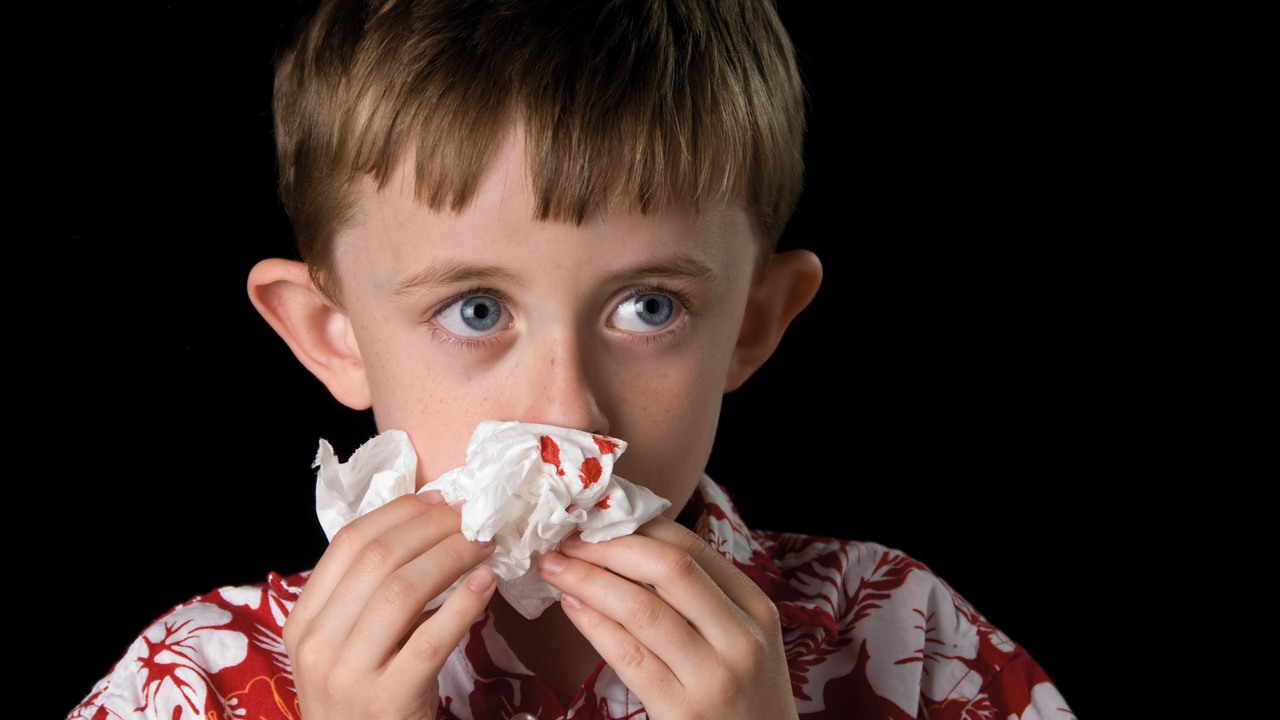
Young boy with a concerned look because of a nose bleed.
DiYES International School – Kids experience frequent nosebleeds for various reasons. Nosebleeds, medically called epistaxis, are common in children. Most cases are harmless but can worry parents. Understanding the causes helps in managing and preventing nosebleeds effectively. This article explores common causes and offers useful prevention tips. The aim is to provide clear information for concerned caregivers.
One major cause is dry air. Dry environments can irritate the nasal lining. Kids often pick at their noses, which worsens the problem. Another reason is allergies. Allergic reactions cause nasal inflammation and increase bleeding risk. Frequent colds or sinus infections also contribute to nosebleeds. Injuries or trauma to the nose are common triggers as well. Kids playing or falling might accidentally hurt their noses. Some children have naturally fragile blood vessels in their noses. Certain medications, like blood thinners, can increase bleeding chances. Structural issues, such as a deviated septum, may cause frequent bleeding. In rare cases, underlying health conditions affect clotting and cause nosebleeds.
“Read about: Global Immunization Priorities: Protecting Health Worldwide”
Keeping the nasal passages moist is crucial. Use saline nasal sprays regularly to prevent dryness. Applying a thin layer of petroleum jelly inside the nostrils helps retain moisture. Use a humidifier in the child’s room, especially during winter. Teach children not to pick or rub their noses roughly. Trim their fingernails to reduce injury risk. Manage allergies with proper medication as advised by a doctor. Encourage good hygiene to avoid colds and sinus infections. When kids play, make sure they wear protective gear to prevent nose injuries. If your child uses medication that affects bleeding, discuss alternatives with your healthcare provider. Regular check-ups can help detect any structural problems early.
Although most nosebleeds are harmless, some require medical care. If bleeding lasts more than 20 minutes despite applying pressure, seek help. Nosebleeds accompanied by bruising or bleeding elsewhere may indicate a clotting disorder. Children who have frequent nosebleeds that interfere with daily life should see a doctor. Sudden heavy bleeding or nosebleeds after significant injury also warrant immediate medical evaluation. A healthcare provider might perform tests to rule out underlying issues. Treatments could include cauterization or medication adjustments depending on the cause.
“Read more: Human Trafficking Institute: Advancing Anti-Trafficking Skills”
First, stay calm to avoid frightening your child. Have the child sit up straight and lean slightly forward. Pinch the soft part of the nose gently but firmly for 10 to 15 minutes. Avoid tilting the head backward to prevent blood from entering the throat. Use a cold compress on the nose or cheeks to reduce swelling. Discourage nose blowing or picking after the bleeding stops. Keep the child hydrated and rested. If bleeding restarts, repeat the steps or seek medical help if needed.
Kids experience frequent nosebleeds mostly due to environmental factors, minor injuries, or allergies. Simple preventive measures can reduce their frequency and severity. Proper care at home and timely medical attention are key. Educating children about nose care plays an important role in prevention. If nosebleeds persist or worsen, consulting a healthcare professional is advised.